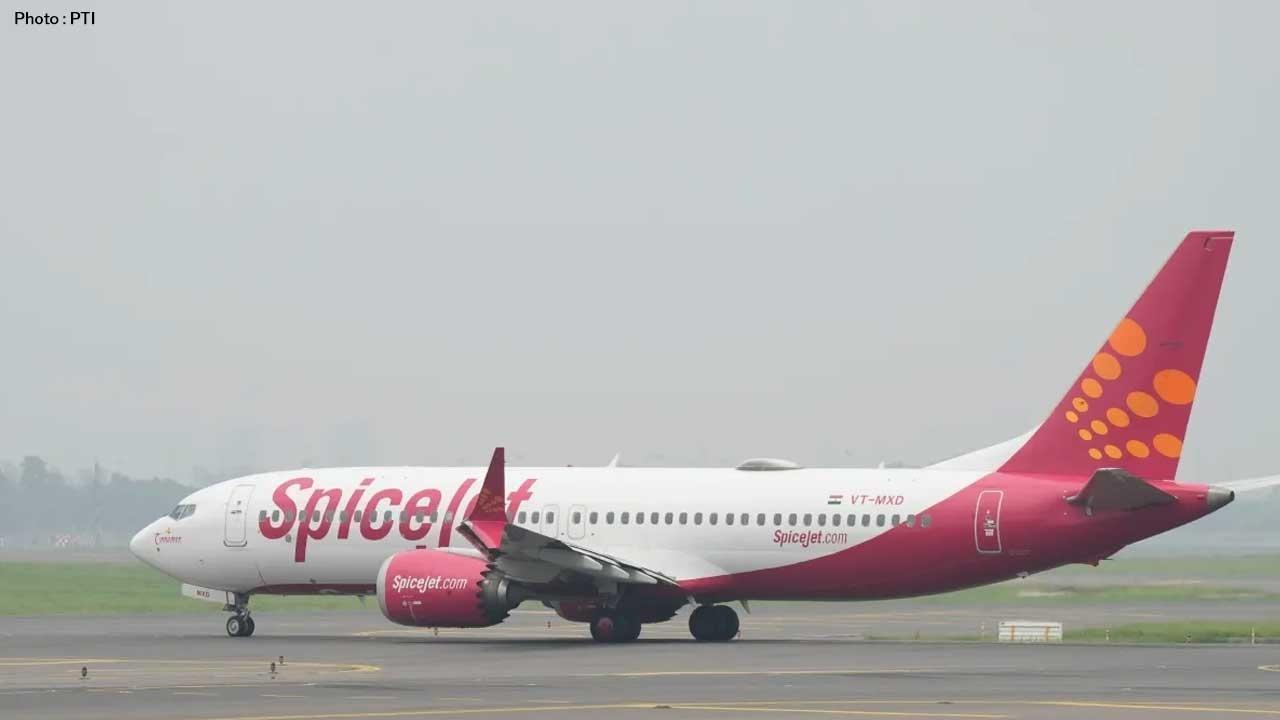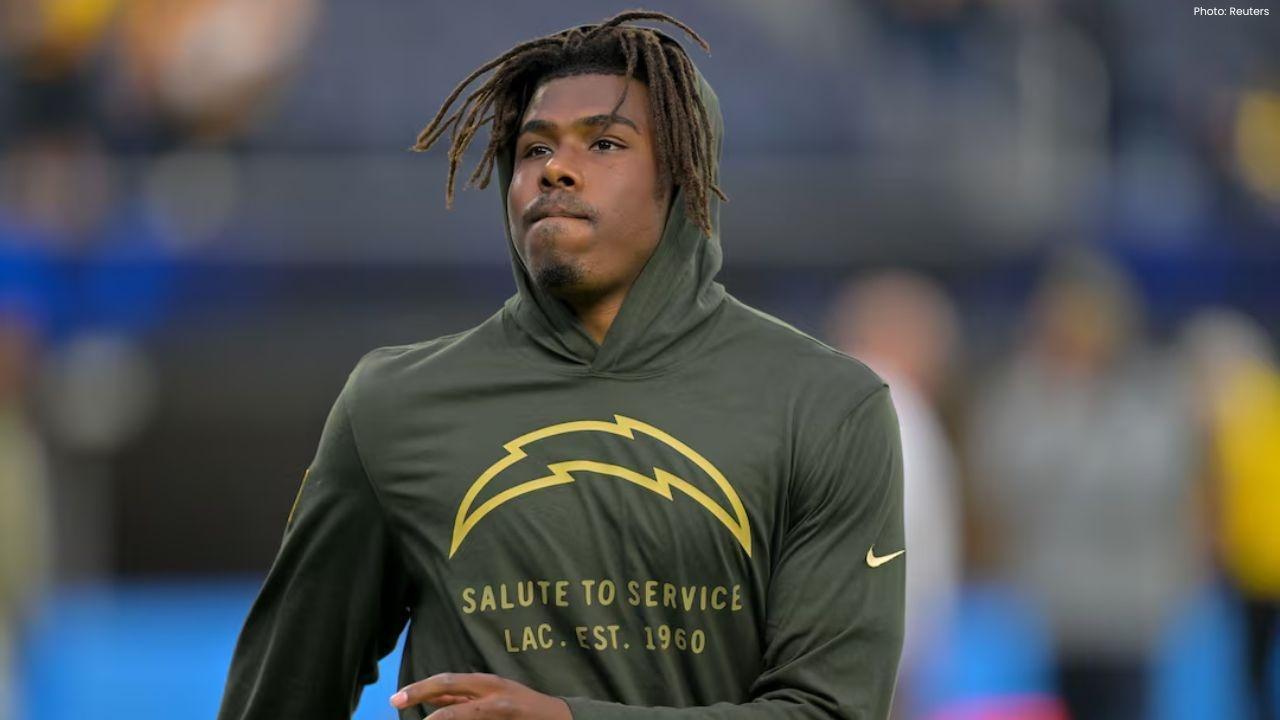
Join 10k+ people to get notified about new posts, news and tips.
Do not worry we don't spam!

Post by : Anis Farhan
Imagine ordering dinner and having it arrive not by car, bike, or courier on foot, but by a flying machine that drops off your meal in minutes. That idea is no longer just sci-fi or a lab demonstration. Uber has recently announced it will begin testing drone-based food delivery in partnership with Flytrex in certain U.S. markets before the year 2025 ends. For many, this marks a turning point: the fusion of autonomous aerial tech with everyday logistics.
If things go well, this could mean faster deliveries, less traffic on roads, possibly smaller delivery costs in certain contexts, and a shift in how food services think about speed and convenience. But the road to widespread drone delivery is full of technical, regulatory, social, and economic obstacles. How ready is Uber? How ready are communities? And what will consumers need to accept or demand? We explore.
Here’s a snapshot of the plan:
Pilot rollout in select markets: Uber Eats will partner with Flytrex to test drone food delivery in specific U.S. cities by the end of 2025. These will be pilot programs, not full-scale launches.
Investment & partnership: Uber is making an equity investment in Flytrex, signaling its long-term interest in aerial delivery. Flytrex brings its existing drone delivery infrastructure, experience, and regulatory approvals.
Regulatory competency: Flytrex is one of a very few companies that have regulatory approval from the U.S. aviation authorities for “beyond visual line of sight” (BVLOS) drone operations. That means their drones can fly without a person constantly watching them directly, which is a big technical and regulatory milestone.
Integration: The plan is to integrate these drone deliveries into Uber Eats’ platform, combining Uber’s network of restaurants, couriers, delivery logic, and logistic know-how with Flytrex’s aerial system.
Objective: The goal is faster delivery, reduced delivery times especially in suburban or less dense areas, lower emissions relative to traditional ground transport, and the ability to offer more delivery options in future (like essential items, convenience items, etc.).
This initiative is not just another tech experiment. It matters for several reasons:
Reinventing Last-Mile Logistics
The “last mile” — that final leg from a distribution center or restaurant to your doorstep — is often the most expensive and time-consuming part of delivery. Drones have the potential to bypass road traffic, take more direct paths, reduce labor costs, and deliver in tight time windows. If successful, this could reduce inefficiencies in delivery networks.
Environmental Impact
Ground vehicles, especially cars and vans, contribute to traffic congestion, fuel consumption, and emissions. If drones can handle smaller payloads efficiently, deliveries via drone could mean fewer delivery vehicles on road, less idling in traffic, and possibly lower carbon emissions—especially for short trips.
Competitive Pressure
Other companies are already experimenting with aerial delivery, autonomous vehicles, robots, etc. When a big player like Uber invests in and tests drone delivery at scale, it forces competition: retailers, food services, logistics firms will need to consider their aerial strategy or risk falling behind.
Consumer Expectations
As people get accustomed to faster delivery windows (thanks to tech, apps, underground fulfillment, etc.), consumer patience for delays shrinks. If drone delivery becomes viable, it could raise the baseline of what people expect in terms of speed and service.
Technology & Regulatory Breakthroughs
Operating drones beyond visual line of sight has long been a barrier. That regulatory approval, safety tracking, air traffic integration, and reliability checks are nontrivial. Having a big name like Uber + Flytrex working through those issues could accelerate general policy or infrastructure improvements for aerial logistics.
It would be wrong to assume the path is easy. There are many obstacles, some technical, some regulatory, some social or economic:
Regulations and Safety
Drones pose risks: air traffic conflicts, failures, weather problems, collisions, security concerns (e.g. what if a drone crashes or is hijacked?). Regulations around unmanned aircraft are strict, especially for flights over populated areas. Ensuring liability, certification, safe paths, integration with existing air traffic control is complex.
Cost & Economics
Although drones could reduce some costs (labor, fuel, traffic delays), they bring their own costs: purchasing the drones, maintenance, landing/takeoff infrastructure, battery costs, regulatory compliance, insurance. For drone delivery to make financial sense, many deliveries must be done efficiently, payloads must be optimized, and volume must be sufficient.
Weight, Payload & Distance Constraints
Drones can’t carry very heavy loads. Delivery of large or multiple items may still need ground transport. Also, flight distance is limited—battery life, range, speed in adverse conditions etc. Suburban or rural deliveries may be easier to design for than dense urban areas.
Weather & Environmental Limitations
Rain, high winds, snow, low visibility—all these affect drone reliability. Drones are more sensitive to environmental conditions than cars. Ensuring operations in all weather, or safely pausing when unsafe, is necessary.
Public Acceptance & Privacy Concerns
Noise, drone presence overhead, risk perception, privacy (cameras on drones), safety of bystanders—these are valid public concerns. Community buy-in will matter. If people see drones as nuisances or safety risks, operations may face pushback.
Infrastructure Needs
For drone delivery to work smoothly, infrastructure such as landing zones, recharging/battery swap stations, launch pads, and possibly aerial corridors are needed. Also, logistics integration: mapping, routing, collision avoidance, automated maintenance. Without these, pilots remain small scale and expensive.
Insurance, Liability & Reliability
Who pays if a drone fails, injures someone, crashes, loses package? What about bad weather, signal loss, theft? These concerns need clear legal frameworks.
Based on what we know and common patterns in similar experiments, here’s how Uber & Flytrex might approach this rollout:
Start in suburban areas or peripheral zones of large cities, rather than downtown cores. Less congested airspace, easier to set up safe routes, fewer vertical obstacles.
Limited types of food or items: lightweight, standardized packaging to optimize drone flights. Possibly convenience items, fast food, snacks, small grocery essentials first.
Daylight operations initially. Possibly only during certain hours or restricted hours to manage visibility and safety.
Specific take-off and landing zones: maybe rooftops, designated drone launch pads, or restaurant rooftops or parking lots. Last small leg may still require human courier.
Strong redundancy and fallback plans: if a drone fails or doesn’t complete delivery, fallback to human courier, or have safety features built in.
Slow scale-up: start with a few hundred or thousands of deliveries, learn from real-world issues (battery wear, weather, customer satisfaction, cost per delivery), then refine operation before expanding.
For people who order food, for restaurants, for regulators, and for city planners—there are both benefits and trade-offs.
For consumers:
Potentially faster delivery windows, especially for nearby or suburban orders.
Possibly higher fees initially to cover drone costs; may come down over time.
Novelty and convenience, but also restrictions (maybe only certain times, certain items, certain places).
Better tracking, possibly more precise estimates.
For restaurants & delivery partners:
Restaurants may need to adapt packaging to fit drone constraints.
They might have to coordinate with drone takeoff zones or specific drop-off areas.
Some may see increased reach and reduced delivery delays; others may struggle to adapt delivery-radius models.
Couriers / drivers may face changes: more competition from aerial drones, possibly fewer ground deliveries in some zones.
For regulators & communities:
Need to adapt airspace rules, emergency protocols, safety standards.
Need to address noise pollution, drone footprint, public perception.
Local governments will need to decide zoning of drone launch/landing zones, how to integrate aerial delivery in city planning.
This Uber/Flytrex move isn’t happening in a vacuum. It aligns with several ongoing trends:
Growth in drone use globally for delivery of goods, medical supplies, parcels etc.
Increasing regulatory acceptance of BVLOS drone flights. More approvals and safer test beds.
Push for faster, more sustainable logistics: same-hour delivery, express delivery expectations are rising. Ground traffic congestion and environment impact pushing demand for alternate modes.
Investment in autonomous and aerial robotics, hybrid delivery systems combining drones, robots, humans.
Customer demand for convenience, transparency, real-time tracking, speed.
Pilot failures due to unexpected weather or airspace interference could sour public perception.
Cost overruns: if operating costs stay high, maintenance is expensive, drones break down, or returns are negative, profitability may suffer.
Regulatory backlash: concerns, lawsuits, restrictions if drones cause accidents, privacy issues, or infringe on noise or flight laws.
Scalability limits: some areas may never be practical due to geography, airspace density, cost structures. The model may work for some zip codes but not others.
Liability concerns in cross‐jurisdiction or overlapping airspaces may slow expansion.
While Uber’s pilot is in the U.S., what’s happening has lessons for markets like India, Southeast Asia, etc.:
Many of the logistical, regulatory and infrastructure challenges are similar or more severe in developing markets: dense cities, mixed regulation, power issues, traffic congestion, unpredictable weather.
There is potential for leapfrogging: newer markets might adopt drone delivery more quickly in suburban or rural zones where road connectivity is weaker or delivery costs are high.
Companies in India may watch this pilot closely to learn best practices: packaging, safety, regulatory approval, customer acceptance.
For policymakers, this sets precedent: how rights of way, airspace regulation, privacy, liability might be handled in their jurisdictions.
Uber’s tie-up with Flytrex to test drone delivery for Uber Eats is a bold and significant move. It underscores a new era of delivery logistics—one that blends aerial and ground transport, autonomous systems, regulatory evolution, and consumer demand. The success of pilot programs by end of 2025 could reshape what we expect when we order food: not just speed, but convenience, sustainability, and perhaps surprise.
If done well, this could be transformative. But it will require careful balance: safety over speed, cost over novelty, community trust over hype. For consumers, the shift could start with small wins—faster delivery, novelty—but mature into a redefinition of delivery expectations. For regulators, it means preparing for more air traffic at low altitude, drone corridors, and accountability. And for Uber and Flytrex, it means proving that drone delivery isn’t just possible—it can be reliable, safe, cost-effective, and scalable.
This article is based on public announcements and news reports as of September 2025. Implementation details, market-by-market rollouts, regulations, and customer availability may vary.










Suranika Roshan Celebrates Bakery Launch with Saba Azad's Support
Suranika Roshan opens her bakery, The Moon Beam Bakery, as Saba Azad shares an encouraging message o

Jets Make History with Unprecedented Special Teams Touchdowns
In a landmark game, the Jets scored two touchdowns on special teams, making franchise history with a

Chargers Secure 25-10 Win Over Steelers with Strong Defense and Herbert's Leadership
Los Angeles Chargers triumphed over the Pittsburgh Steelers 25-10, showcasing a formidable defense a

Rams Triumph Over 49ers; Adams Left with Minor Oblique Injury
The Rams secured a 42-26 win against the 49ers, but Davante Adams left the game in the fourth quarte

Jurel's Stellar Performance Raises Selection Dilemmas for India
Ahead of the South Africa Tests, Dhruv Jurel's impressive form complicates team selection as Rishabh

Ryan Williams Embraces Indian Identity, Joins Football Camp
Ryan Williams has transitioned from Australia to India, joining the national football camp in Bengal